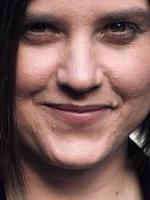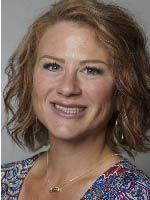

Stand Up to Sit-and-Get: Exercise Innovative Professional Learning Strategies |
Participate and share : Poster
Kathleen Mansfield Jamie Thompson Jessica Collier Dr. Kimberly LaPrairie
Sick of sit-and-get professional learning? Why not boost your professional learning strategies to be more effective and satisfying through the innovative use of technology? We will examine a variety of research-based tools and learning strategies to help you level up.
| Audience: | Technology coordinators/facilitators, Coaches, Professional developers |
| Skill level: | Beginner |
| Attendee devices: | Devices not needed |
| Topic: | Professional learning |
| ISTE Standards: | For Coaches: Collaborator
|
| Additional detail: | ISTE author presentation |
There are many variables affecting participation in professional learning opportunities and their effectiveness. One variable is the use of technology to deliver this professional learning. However, since technology is so integrated into our learning society, simply using new technology alone is not enough to motivate educators to use, learn, and apply their learning from a professional development setting. According to Freidman (2005), the big spurts in productivity come when a new technology is combined with new ways of doing business. For those providing professional development, this means “only when information and computer technologies and new ways of teaching, learning and professional developing are dynamically integrated, technology-enhanced teacher professional development will truly promote the growth of teachers to enhance teaching quality and efficiency” (Gu et al., 2012, p. 288).
In an effort to combine professional development delivery with innovative methods, this session will demonstrate how alternative professional learning strategies and innovative technologies can be leveraged to make professional learning relevant and engaging to a more inclusive population. A variety of research-based tools and strategies will be modeled, including microlearning, gamification, crowd-sourced learning, and the use of social media for sustained inquiry.
Participants will explore research-based tools and strategies for innovative professional learning.
Participants will be able to integrate digital learning tools to provide meaningful professional learning.
Bozarth, J. (2010). Social media for trainers: Techniques for enhancing and extending learning. Wiley.
Freidman, T. (2005). The world is flat: A brief history of the 21st century. New York: Farrar, Straus, and Giroux.
Gagne, R. M., Briggs, L. J., & Wagner, W. W. (1992). Principles of instructional design (4th ed.). Harcourt Brace College.
Gardner, H. (2008). 5 minds for the future. Harvard Business Press
Gu, L., Jiao, J., Wang, X., Jia, Y., Qin, D., & Lindberg, J. O. (2012). Case studies on the use of technology in TPD (teacher professional development). Online Submission, 278–290. Retrieved from http://search.ebscohost.com.ezproxy.shsu.edu/login.aspx?direct=true&db=eric&AN=ED532919&site=eds-live&scope=site
Gura, M. (2018). The edtech advocate’s guide to leading change in schools. International Society for Technology in Education.
International Society for Technology in Education (ISTE). (2019). ISTE standards for coaches. https://www.iste.org/standards/for-coaches
International Society for Technology in Education (ISTE). (2017). ISTE standards for educators. http://www.iste.org/standards/for-educators
International Society for Technology in Education (ISTE). (2018). ISTE standards for education leaders. https://www.iste.org/standards/for-education-leaders
Powell, R. (2011). The response revolution: The pursuit of excellence in teaching and learning. Robert Powell Publications Ltd.
Roblyer, M. D. (2015). Introduction to systematic instructional design for traditional, online, and blended environments. Pearson Education, Inc.
TEDx Talks (2012, August 13). Promoting motivation, health and excellence: Ed Deci at TEDxFlourCity. [Video file]. Retrieved from https://www.youtube.com/watch?v=VGrcets0E6I
Whitaker, T., Zoul, J., & Casas, J. (2015). What connected educators do differently. Routledge.

Kathleen is passionate about the use of technology in learning environments and the protection of student privacy. As an Instructional Systems Design and Technology doctoral candidate, her research focus concerns the preservation of parental rights to their children's digital profiles while using innovative technology within instructional environments. Known as "The Perky Privacy Girl," Kathleen creates upbeat presentations at multiple international conferences each year.

Jamie L. Thompson is a doctoral fellow in the 4+1 TEAM program at Sam Houston State University in Huntsville, Texas. Mrs. Thompson has more than 20 years of experience in public, private, and higher education settings. Her current research focuses on instructional technology and the development of pre-service teachers to improve instructor effectiveness and longevity within the educational field.

Jessica Collier is a doctoral student in Instructional Systems Design and Technology at Sam Houston State University. She holds an M.Ed. in Instructional Technology and has more than 10 years of experience developing training materials for diverse audiences in higher education and business. Some of her focus areas are universal design for learning and microlearning, and she is passionate about professional development, accessibility, and the intersection of culture, learning, and technology.

Dr. Kimberly LaPrairie holds a Ph.D. in Educational Research and Leadership and a M.Ed. in Curriculum and Instruction, both specializing in Instructional Technology. She has over 20 years of private, public, and higher education experience and is currently an Associate Professor of Instructional Systems Design and Technology in the Department of Library Science and Technology at Sam Houston State University in Huntsville, Texas. Dr. LaPrairie’s research focuses on technology integration to improve educational and training systems in organizational settings, instructor effectiveness, and content accessibility. She has published extensively and presented at numerous international, national, and state conferences.